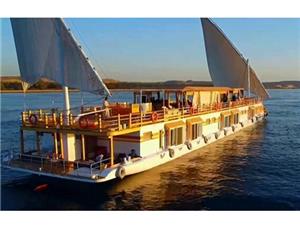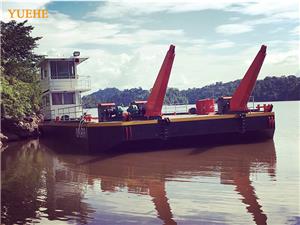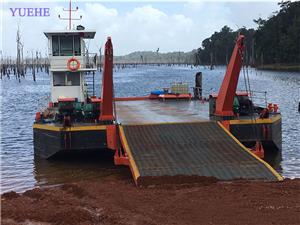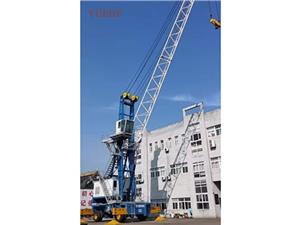The core features of medium and small-sized modular cutter suction dredgers
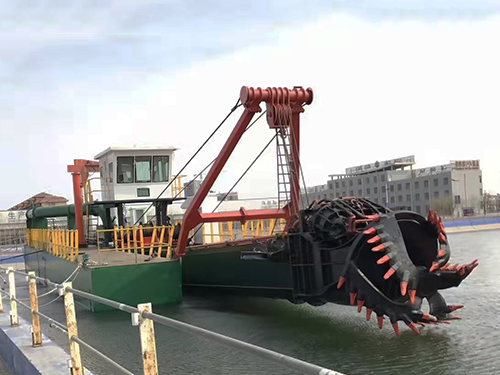
Medium and small-sized modular cutter suction dredgers are a type of mobile and flexible equipment designed for medium and small-scale dredging projects. They combine the core functions of cutter suction dredgers with the advantages of modular structure. Their characteristics and application scenarios are closely related to their "medium-sized" and "modular" designs. The following will analyze them from the aspects of characteristics and applications:
I. Core features of medium and small-sized modular cutter suction dredgers
Separate structure, flexible for transportation and assembly
The modular design typically divides the dredger into three parts: the power station (containing core power equipment such as engines and mud pumps), the suction device (including the cutter, bridge frame, and suction pipe), and the hull (support platform). Each module can be transported independently (for example, by land trucks or small vessels), and can be quickly assembled upon arrival at the operation site. This design significantly reduces the transportation difficulty (no need for large barges or extremely wide transportation permits), and is particularly suitable for inland rivers, narrow waterways, or projects lacking large docks.
2. Compact structure, with smaller size and shallower draft
The hull lengths of medium and small-sized vessels are usually between 10 and 30 meters, with widths ranging from 5 to 12 meters. The power of the winch is generally between 50 and 500 kW, and the flow rate of the mud pump is 500 to 3000 m³/h. The overall size is small, the draft is shallow (usually ≤ 2.5 meters), and they can operate in shallow waters (such as inland rivers, lakes, and coastal mudflats), and even be able to move flexibly in seasonal water areas with large water level fluctuations (such as small rivers during the dry season) to cover areas that large dredgers cannot reach.
3. Highly mobile and with high operational efficiency
The power system of this type of equipment mostly adopts direct drive by diesel engines or hydraulic transmission, and does not require an external power source. It can operate independently or be transferred over short distances by tugboats. For medium and small-sized models, the rotational speed of the winch can be adjusted over a wide range (typically 50-500 r/min), enabling quick adaptation to different soil types (such as silt, sand, clay, and even some soft rocks). The daily operation volume of a single vessel can reach 500-3000 m³ (depending on the soil type and working conditions), making it suitable for short-term and small-scale dredging tasks.
4. Controllable costs, outstanding economic efficiency
Compared with large suction dredgers (with power of several thousand kilowatts and a cost of tens of millions or even over a billion yuan), the procurement cost (about 200-1,000 million yuan), operation and maintenance cost (fuel, labor, spare parts) and transportation cost of medium and small-sized modular equipment are significantly lower. For small and medium-sized projects with limited budgets (such as river regulation in towns and small port maintenance), their cost-effectiveness advantage is obvious.
5. Strong adaptability to the environment, while also meeting environmental protection requirements
• Geological Adaptability: By replacing the cutter (such as toothed cutter or chisel cutter) and adjusting the rotational speed of the cutter, different hardness of substrates (from silt to sand and gravel with a particle size of ≤ 100mm) can be processed.
• Environmental Optimization: Some models are equipped with a sealed slurry transportation system (to reduce slurry leakage), an overflow control device (to prevent over-digging), or are paired with a slurry-water separation equipment (for on-site dehydration and subsequent disposal of the excavated soil), thereby reducing disturbances to water bodies and the surrounding ecology, aligning with the current trend of environmentally friendly dredging.
6. Simple operation, low maintenance cost
The control systems are mostly of integrated design (some equipped with PLC automatic control), and operators can start working after a short training period. Key components (such as the cutter shaft and the impeller of the slurry pump) are made of wear-resistant materials (such as high-chromium cast iron), and the simplified structure provides ample maintenance space. Daily maintenance (such as replacing worn parts and lubrication) can be carried out by the fleet themselves, reducing reliance on external technical support.
II. Main application scenarios of medium and small-sized modular cutter suction dredgers
Medium and small-sized modular cutter suction dredgers, due to their flexibility and economy, are widely used in inland water networks, coastal mudflats, small ports and surrounding water conservancy projects, specifically including:
Dredging and maintenance of inland waterways
It is one of its main application fields. For example:
• Remove the accumulated sediment in small rivers (such as tributaries of the Yangtze River and the river network in the Pearl River Delta), restore the designed water depth of the shipping channels (generally ≤ 5 meters), and ensure the navigation of small vessels (such as inland cargo ships with a load capacity of ≤ 500 tons).
To cope with seasonal variations in water levels (such as when the waterway becomes shallower during the dry season), periodic dredging is carried out to maintain the navigational capacity throughout the year.
2. Maintenance around ports and docks
For the dredging of the harbor basins, anchorage areas and the waters near the wharfs of small ports (such as those with a capacity of less than 10,000 tons):
• To prevent the accumulation of sediment which may reduce the berthing capacity of the wharfs;
Clean up the sediment stirred up by the ship's navigation to ensure the efficiency of loading and unloading operations.
• Due to its modular design, it can be transferred through small docks or temporary wharfs, making it suitable for the maintenance needs of multi-bay and dispersed ports.
3. Land Reclamation by Dredging and Land Reclamation
The excavated slurry is transported through a mud pump to low-lying areas, abandoned fish ponds or tidal flats. After undergoing sedimentation and compaction, it forms land areas, which are used for:
• The expansion of industrial parks and logistics storage areas (such as land reclamation along the coast or riverbanks);
• Rural homestead reclamation and farmland consolidation (to enhance land utilization rate);
Small-scale reclamation projects (such as land reclamation around reservoirs to increase arable land).
4. Hydraulic Engineering and River Regulation
In the field of water conservancy, it is mainly used for:
• Dredging of river channels (such as spillways of small and medium-sized reservoirs, irrigation canals), to enhance flood discharge capacity and irrigation efficiency;
Lake ecological management (such as removing nutrient-rich sediment and improving water quality);
Urban flood control (including dredging of urban rivers and connecting of drainage networks with flood discharge channels).
5. Emergency dredging in special scenarios
Due to its high mobility, it can be used for emergency handling of sudden incidents:
• Rapid dredging of rivers and lakes after typhoons and heavy rains (to prevent secondary disasters);
Local dredging (assistance for refloating) after a ship grounding accident
Removal of silt in front of small-scale water facilities (such as sluices and pumping stations) (to ensure the normal operation of the equipment).
III. Limitations and Applicable Boundaries
Although the medium and small-sized modular cutter suction dredgers have significant advantages, their processing capacity is limited (the daily operation volume of a single vessel is usually no more than 3,000 cubic meters), and they are also constrained by the power of the cutter and the head height of the mud pump, making it difficult to cope with:
• Deep-water areas (when the water depth is greater than 10 meters, the suction height of the mud pump is insufficient);
Hard soil types (such as pebbles with a particle size greater than 200mm, and strongly weathered rock layers);
Large-scale projects (such as coastal deep-water channels, large-scale reclamation projects).
Such scenarios still require the use of large self-propelled cutter suction dredgers (with power > 1000 kW and draft > 5 meters) or cutter suction - dredge-blowing and filling vessels.
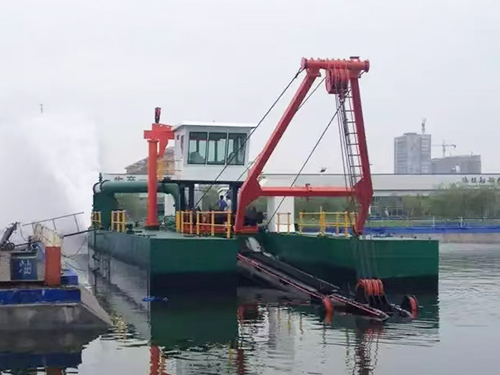
Summary
Medium and small-sized modular cutter suction dredgers have "flexibility, economy and strong adaptability" as their core competitiveness. They are the preferred equipment for small-scale dredging projects, especially playing a key role in river channel maintenance, small port dredging, land reclamation by filling and water conservancy improvement. With the improvement of environmental protection requirements and technological progress (such as electrification and intelligent control), their application scenarios will be further expanded, and they will become the main models in the medium-sized dredging market.

